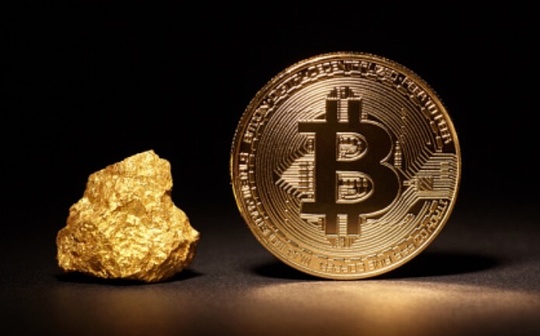Exclusive interview with Hyperlend Lianchuang: HYPE is significantly undervalued compared to BNB, and the price will be amazing at the end of the year

転載元: chaincatcher
06/18/2025·5DAuthor: BlockBeats
More than two months ago, when the $JELLYJELLY incident occurred, the market's perception of Hyperliquid's future became polarized. Some say that Hyperliquid will be FTX 2.0; some say that the future of Hyperliquid is still bright.
Yesterday, $HYPE broke through $44 and hit an all-time high. Starting from James Wynn's crazy operation, Hyperliquid and the rising $HYPE have actually gotten rid of the haze and walked out of a new chapter.
With the strong price performance of $HYPE, the HyperEVM ecosystem is also quietly growing. How do builders of HyperEVM ecosystem view this ecosystem? What is the difference between Hyperliquid + HyperEVM and Binance + BNB? In terms of market value, is $HYPE overvalued or undervalued?
With these questions in mind, BlockBeats interviewed Hyperlend co-founder @0xNessus.
The mental journey of doing Hyperlend
BlockBeats: Let's briefly introduce Hyperlend to us?
Ness: Hyperlend is like AAVE of the Hyperliquid ecosystem, and is the only project on HyperEVM that has been officially fully licensed to run the latest code. We provide lending services, and users can use $HYPE as collateral to borrow. Of course, there is also Lightning loan, where users can execute any strategy they want based on this.
Of course, in addition to these core basic functions, based on our positioning of our "Hyperliquid financial infrastructure", we provide basic liquidity channels, on-chain risk management mechanisms, and asset mortgage credit lines that other dApps can access. By simplifying complexity and providing deep, composable liquidity, we aim to be the preferred income layer on Hyperliquid—where users can make profits from idle assets or leverage for any strategy.
We are currently focusing on introducing new features for the Hyperliquid ecosystem, such as tokenizing HLP vaults - users can deposit money to the HLP vault through Hyperlend, and this part of the deposit will be given to users in the form of tokens, which is equivalent to the "voucher" of HLP vault deposits. This token can be used as collateral on Hyperlend to lend stablecoins, which means that users can leverage more funds and deposit more money into the HLP vault to achieve higher returns.
We are also exploring the use of sustainable cooperative positions as collateral, hoping to change the limitations of long-term holdings that cannot play more roles in CEX. Users will be able to open positions on Hyperlend, which will be created on Hyperliquid through our code, and at the same time obtain tokenized credentials representing the positions. In this way, if you want to open a long or short position in Bitcoin, you can use the position as collateral to lend stablecoins to do more while maintaining the opening position. We are also looking forward to this innovation.
BlockBeats: Did your confidence in Hyperliquid be shaken more than two months ago when the $JELLYJELLY incident happened? What did you think of this incident at that time, and how did you think of Hyperliquid's handling after the incident?
Ness: I think they may not have considered it at the beginning, or ignored meme coins that were online on Hyperliquid but had low liquidity. So there are smart users or entities that exploit this vulnerability, but overall, the team handles it very quickly and responsibly.
This also makes me more confident in the HLP vault. This vault has made a lot of money since it went online - I remember that the total revenue has exceeded $60 million, which is unmatched by any other market maker vault. And now they have set two different risk parameters for the vault, which I think makes it more "immense" than before.
In general, I think this team is very professional and the decisions they make are based on the user's interests.
Comparison between Hyperliquid and Binance and other on-chain contracts
BlockBeats: What are the similarities and differences between Hyperliquid + HyperEVM and Binance + BNB Chain?
Ness: Both appear to be high-performance exchanges + supporting smart contract networks, but this superficial similarity masks their fundamental architectural differences.
Hyperliquid chose "Transparency First": every transaction, capital change and liquidation are executed directly on the chain, leaving an unchangeable public audit record. Binance intends to close the order book and risk control engine in the server, and the outside world cannot independently verify its order depth or solvency. BNB Chain also inherits this opacity – because the deepest liquidity of the exchange has never really entered its on-chain ecosystem.
The real watershed lies in HyperEVM - this is the execution layer unique to Hyperliquid, with built-in precompiled contracts and interactive code interfaces. These precompiled features allow any developer to access the full order book of Hyperliquid with just one call. Liquidity is no longer a "walled garden", but a "public asset"; on-chain strategies do not need to indirectly access the depth of the centralized level by encapsulating assets or fragmenting AMMs.
This architectural choice brings combination capabilities that BNB Chain does not have. For example, a BTC‑USDC perpetual contract can be opened directly from HyperEVM's smart contract and tokenized into an asset similar to ERC‑721. The position itself becomes a movable collateral—can be transferred off-market, used in lending agreements such as Hyperlend, or packaged into structured products without closing the position. On Binance, perpetual contracts can only be locked in the exchange and cannot be withdrawn, transferred or re-staked on-chain.
Since HyperEVM natively routes orders to Hyperliquid, principal efficiency is preserved. Whether it is a vault, robot or ordinary user's wallet, you can get the "maximum amount that the order book can provide" in just one contract interaction, thereby eliminating the basis risks and slippages common to derivatives on-chain. On BNB Chain, developers must simulate liquidity through AMM or rely on off-chain market makers, resulting in increased delays and more complex systems.
To sum up, these design decisions create two completely different development experiences:
- Hyperliquid narrows the gap between DeFi verifiability and the depth of top centralized exchanges;
- Binance and BNB Chain continue to divide these two worlds - true liquidity only exists in the centralized core, and only limited peripheral transparency is provided on the chain.
BlockBeats: Why are whales like James Wynn keen on Hyperliquid? Compared with platforms such as GMX or dYdX that can also implement on-chain perpetual contract trading, what is unique about Hyperliquid?
Ness: For Wynn, it wasn't the spread or funding rate that attracted him, but the "program effect". Hyperliquid's order book on the entire chain will broadcast every large position in real time, making whale transactions a public show that the public can watch every second. Wynn makes full use of this visibility—he deliberately opened a super-large long position where anyone could see his price for a liquidated position, creating constant attention: emoticons, comments, millions of exposures that simply cannot be achieved on those translucent platforms.
Some people think this is a well-planned marketing operation. After amplifying the tension brought by his position, Wynn claimed that “the market maker hunted his position on Hyperliquid” and called on traders to move to Binance; the timing was quite coincidental, and I think he was probably inspired to make such a remark.
The current situation and future prospects of HyperEVM, benchmarking
$BNB?
BlockBeats: There are already some native assets that have emerged on HyperEVM, such as meme currency $BUDDY and NFT series Hypio. Do you think HyperEVM will be as popular as Solana or Base in the future?
Ness: To be honest, I don't play meme coins, so I don't know... But I think that as HyperEVM becomes more and more powerful, it can handle more transactions, or increase the Gas cap, more and more people will be interested in trading meme coins or other similar assets. Just like Solana's success, it is largely due to the meme coin boom, and Solana's network of able to process thousands of transactions per second on the chain at extremely low gas costs.
Without meme coins, users' usage needs may not be so strong. I think the Hyperliquid community is very cohesive, and there will definitely be meme coins belonging to HyperEVM in the future.
BlockBeats: How is the current development of HyperEVM in your opinion? What else needs improvement?
Ness: Recently, more and more people have started trading meme coins on HyperEVM, which has led to a large number of transactions being sent to small blocks. But the Gas cap for these small blocks is only 2 million, which means that each block can accommodate very limited transactions, and once it is filled, it will need to pay higher Gas.
At that time, Gas cost soared to around $20 per transaction, which was very high. Jeff and the entire team noticed this problem and made quick adjustments to reduce the blocking time of the small block from the previous 2 seconds to 1 second, which would allow more transactions to pass faster and help reduce Gas pressure.
As long as the community has such feedback, HyperEVM will continue to improve and grow. The Hyperliquid team is always working to help the community and support it as much as possible. Now of course they have their own development path, focus on what they are doing, and the community is operating on their own. But when the community gets louder, the Hyperliquid team will still stand up and listen to help everyone, which we are very grateful.
BlockBeats: If you compare $HYPE with $BNB, do you think $HYPE is underestimated, overestimated or normal?
Ness: Underestimate.
Even if it is just a simple public chain currency VS public chain currency, $HYPE still has at least 5 times the increase. If you superimpose Binance as the exchange's value on $BNB and Hyperliquid as the exchange's value on $HYPE, I think there will be more room. Hyperliquid repurchases HYPE worth about $3 million every day, which is about $1 billion in annual purchases.
Keeping this trend, $HYPE's market cap could reach an astonishing level by the end of the year.



 jinse
jinse